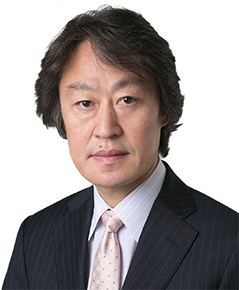


 13:00〜16:00
13:00〜16:00
Adhesive Dentistry:
The Daily Application of the Latest Research

Moderator
Prof. VAN MEERBEEK, Bart
University of Leuven
-
Bonding Dental Ceramics
The ability to bond dental ceramics allows the practitioner to perform more conservative tooth preparations. As there are many different types of dental ceramics available (zirconia, lithium disilicate, porcelain, processed composite, etc), determining the correct protocol for each type of ceramic can be confusing. This lecture aims to simplify the process of bonding ceramics and provide the clinician with a protocol that can be used to bond any type of dental ceramic. Each detail of the bonding procedure is based on research performed at the UAB School of Dentistry.
Review the indications for bonding dental ceramics Describe the protocol for roughening, cleaning and priming zirconia and lithium disilicate Classify the types of cements used for adhesive bonding
Zirconia,Lithium Disilicate,Resin Cement,Resin Modified Glass Ionomer Cement,Crowns,Biomaterials,Research
-
Material Selection and Clinical Cases of Direct Restorations
Development and improvement of resin composites and adhesive systems represent major advancements in restorative treatment. Together with the various types of adhesive systems, resin restoration systems comprise the tooth colored alternatives to metallic restorations. Selection of tooth colored restorative materials that simulate the physical properties of natural teeth, combined with restorative techniques, provides the framework for the optimal development of esthetic restorations. The most recent advancement in the adhesive technology is the introduction of the universal adhesive, which is distinguished by both its suitability for different types of adherent substrates. This presentation will explore the importance of adhesive systems in clinical dentistry and discuss about their clinical performance.
Learn how to see the central incisor three-dimensionally Familiar with practical, clinical tips to achieve esthetic Able to restore challenging restorative cases
Esthetic Classification,Anterior Lesion,Posterior Lesion,Resin Composite,Clinical Procedure,Colors in Dentistry
-
Rationale and Multifactorial Characterization of an Innovative Multi-Step Universal Adhesive for Durable Bonding
Universal adhesives (UAs) combine the primer with the adhesive resin, enabling simplified clinical bonding procedures with (claimed) lower technique sensitivity. ‘UNIVERSAL’ refers to application versatility, enabling UAs to be applied either in etch-and-rinse or self-etch bonding mode, while offering also (claimed) bonding potential to glass-rich (via silane) and glass-poor zirconia (via 10-MDP) ceramics. While performing favorably at short term, the UA’s long-term bonding performance is still insufficiently proven. One UA shortcoming is their low film thickness, resulting in suboptimal polymerization to stabilize the adhesive interface, potentially also promoting water sorption. With special focus on the neglected need of a hydrophobic and sufficiently thick adhesive-resin layer, innovative UA technology will be introduced.
To understand the importance of a multi-step universal bonding approach as required for durable bonding To learn the mechanisms of adhesion to tooth tissue of a multi-step universal bonding approach To understand the need of a highly hydrophobic adhesive layer with thick film thickness and low water sorption
Universal Adhesive,Bonding Technology,Laboratory Research,Bond Strength,Water Sorption,Adhesive Film Thickness,Aging Resistance,Shock Absorbing,Etch-and-rinse,Self-etch





